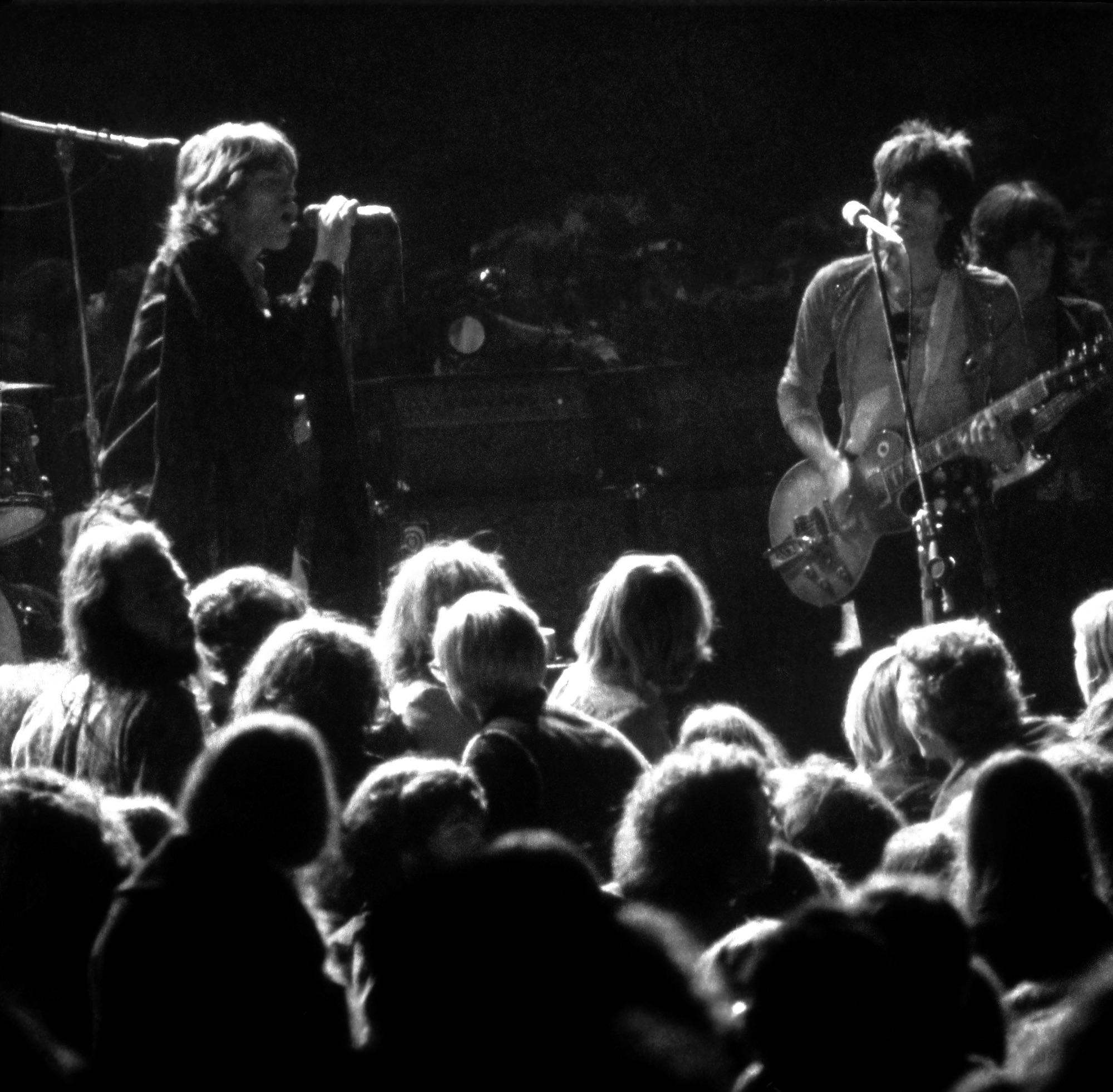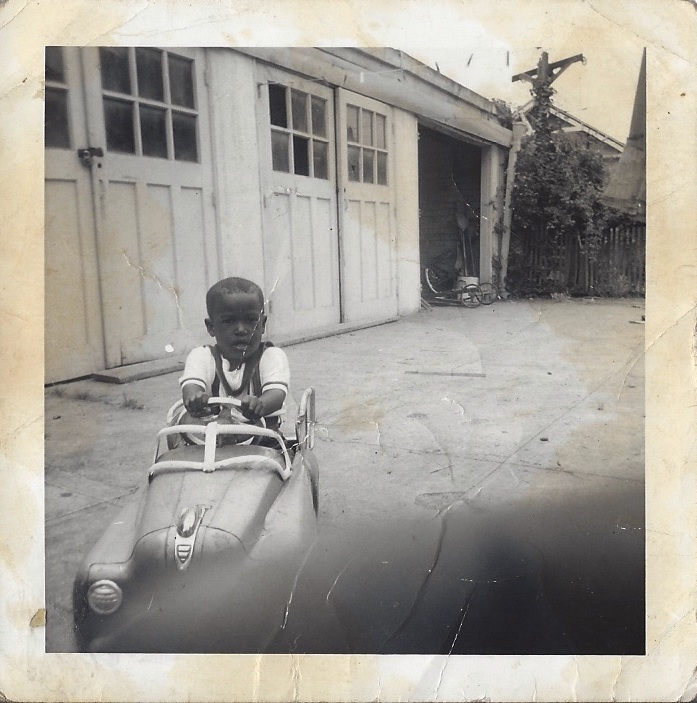On December 6, 1969, Meredith Hunter, an 18-year-old African American man, was stabbed to death at what was billed as “Woodstock West,” a free Rolling Stones concert at the Altamont Speedway in Northern California. Ever since, Altamont has served as the symbolic end of the freewheeling 60s—a wake-up call that optimism and idealism weren’t going to be enough. That being young, passionate, and idealistic could only take you so far. That young people ready to take over could not somehow wipe out the story of race in America.
For those who felt the counterculture was a revolution in the making, Altamont was a reminder of the racial injustice and turbulence that still plague our nation today.
Videos by VICE
Of course, it’s worth noting that the Hell’s Angels biker gang that was brought on to provide “security” had violent encounters with many fans on that day, most of whom were white. But it would be a mistake to ignore the possibility that the face-off between the Hell’s Angels and Hunter began with their targeting him because he was a black guy hanging out with a white woman. Given the Angels’ past record of assaulting and beating people of color in the Bay Area and presenting themselves as a kind of paramilitary organization meant to keep the street clean—which they understood and explained as keeping it white—much of what happened with Meredith Hunter almost inevitably came down to the color of his skin.
In Just a Shot Away, out July 10, Saul Austerlitz tells Meredith Hunter’s story in detail. Many Americans have become familiar with the moments he appeared on screen in the 1970 film Gimmie Shelter, but Austerlitz felt he was an absence more than a presence there. The author delves into Hunter’s story before the show that took his life, as well as what happened to his family in the intervening years. I reached out to Austerlitz to talk about out just how crazy it was to hire a reactionary biker gang for security, what the non-guilty verdict in Meredith’s murder trial meant, and why the broader saga resonates so acutely in our own strange political era.

VICE: This story has been widely covered over the years. How did you go about adding to the existing tellings out there?
Saul Austerlitz: In the intervening years there’ve been a number of books written by people who were involved in the show. Often, the undercurrent of those books was, “This wasn’t my fault,” or “Here’s who’s to blame.” There hadn’t been a book that had the necessary distance to really tackle the story. I was born after Altamont, but it’s interesting to approach the story and talk to people who were involved. I wanted to put a narrative together out of all of their disparate experiences. I ended up speaking to about 75 people for this book. There was a lot of Facebook sleuthing, trying to track people down and ask them if they’d be interested in talking.
As has been reported previously, the planning of the concert was pretty hasty so as to capitalize on the success of Woodstock, and organizers were not ready for the 300,000-plus people that attended. But how did they get it so wrong in such a spectacular way?
Success can be a little bit dangerous. Between the free shows that had been put on in San Francisco by bands like the Grateful Dead and Jefferson Airplane, Woodstock, and a lot of the other mass gatherings of the late 60s, like the Human Be-In, there was a sense that these things would always work out, that everyone in attendance wanted to have a good experience, wanted things to go well, and have an opportunity to be together, listen to music and do drugs together. There wasn’t a need to necessarily worry about questions like: What would people eat? Where would they use the bathroom? Where would they sleep? Who would protect them? The mentality was that everyone was in this together.
It was an admirable philosophy that didn’t serve the planners well here.
How much of the decision to bring in the Hells Angels do you think it’s fair to lay on the Rolling Stones alone?
I would say it was the Grateful Dead as much as the Rolling Stones who were responsible for hiring them. They were the ones who gave the Angels their seal of approval, saying they had guarded the generator for them at previous shows in Golden Gate Park and it had all gone well.
It was clearly a mistake. It was clearly a mistake to pay them in alcohol, which only could have exacerbated the situation. The Dead had worked with the Angels, but were putting them in a situation that was highly unfamiliar to them. Going to a place that they didn’t really know, dealing with an audience that was probably 100 times as large, and making them essentially the sole authority figures responsible for security at a show of that size. Those mistakes played a part in leading to this disaster.
The Hells Angels are widely considered a criminal organization today. How was that different in 1969, just after Hunter S. Thompson had introduced them to the world in his book?
The Thompson book is a really important milestone: It’s essentially the first time that many Americans are introduced to the idea of the Hell’s Angels—or really to the idea of biker culture in general. It had played a part in movies from the 50s, like The Wild Ones, but Thompson put meat on those bones in the sense of giving readers an idea of who the Angels were, what they were interested in, how they behaved with each other, and how they behaved in the world at large.
Even at the time, the Angels were at the very least a quasi-criminal organization. They were the people who broke up an anti-Vietnam demonstration in Berkeley, and started beating demonstrators. They had been involved in racially charged, or outright racist, acts of violence. I think the distinction is that after Altamont—when the break with the counterculture happened—the Angels moved more thoroughly in the direction of full-on criminality. They demonstrated to the criminal underworld that they were capable of loyalty to each other and capable of loyalty to an organization.
They ended up being hired for all kinds of cocaine distribution deals and kind of became drug messengers in the time afterwards. Altamont is a real transition moment for them. The people who had been their friends, the people in the San Francisco counterculture who felt like: Well, we don’t like the police and you don’t like the police, so let’s all be friends together—seeing what happened at Altamont, seeing how they behaved, that was really the breaking point.

Hells Angel Alan Passaro was brought to trial for stabbing Hunter, but was acquitted on the grounds of self-defense. That’s a story Americans might be familiar with in our own time.
In my personal opinion, he was guilty. The video footage which had seemed so condemnatory ends up saving Passaro, because he was asking the jury to only consider what was seen in that footage. In that footage, it’s very hard to tell what’s precisely happening. Some of what we hear, or what other witnesses have said about what happens after the footage, is as troubling if not more so. We do see Meredith Hunter pull out a gun in the footage, but what witnesses say about what happens after the footage comes to an end when Hunter’s gun is knocked away [is scary].
Rather than acting in the way another more professional security force might have done, putting him in handcuffs and taking him away, they essentially pull Hunter out of sight and continue beating him until he dies.
Passaro’s lawyer, George Walker—himself African American—argued that Passaro was acting in self defense of others, meaning that he wasn’t afraid for his own life, but rather was afraid that Meredith Hunter was going to hurt somebody else, and Passaro was acting to defend them. Passaro’s defense managed to sidestep [key issues] in many ways. That’s how he ends up being acquitted.
How do you explain the racial tensions that underlined this trial remaining so strong in America today despite such a spectacular example being visible to young people a generation ago?
What we’ve seen in the last couple of years is a reminder that a lot of what was present in December l969 hasn’t actually gone anywhere. There are many ways in which our country has made tremendous progress, including racially, but when we look at who’s President of the United States, when we look at the language that he uses, when we look at the ways in which his supporters are willing to turn a blind eye to the things he says that are clearly racist, that are clearly biased, I think it’s a reminder that we are still struggling to escape the bonds of race. We are still struggling to figure out a way to not have racism be the bedrock of what moves American politics. What happened at Altamont, seems to be replicated in what’s taking place in the country at large right now.
How conscious were of you of the parallels to police killings in modern America when working on the book?
I couldn’t help but think about the parallels between Hunter and some of the figures now, whether it’s Trayvon Martin or Tamir Rice or any of the other young black men who are [being] killed by police officers. The passage of time has been helpful in some senses to understand Hunter’s story better. At the time, it was mostly discussed as being about rock concerts, the counterculture, and the Hell’s Angels. It’s a story that we are more attuned to today than people were at the time. [It exemplifies] what happens when African American men are in places that are understood to be not for them by figures of authority. In that sense it feels like a very timely and, unfortunately, a very familiar story.
This interview has been lightly edited and condensed for clarity. Learn more about Austerlitz’s book here.
Sign up for our newsletter to get the best of VICE delivered to your inbox daily.
Follow Seth Ferranti on Twitter.




